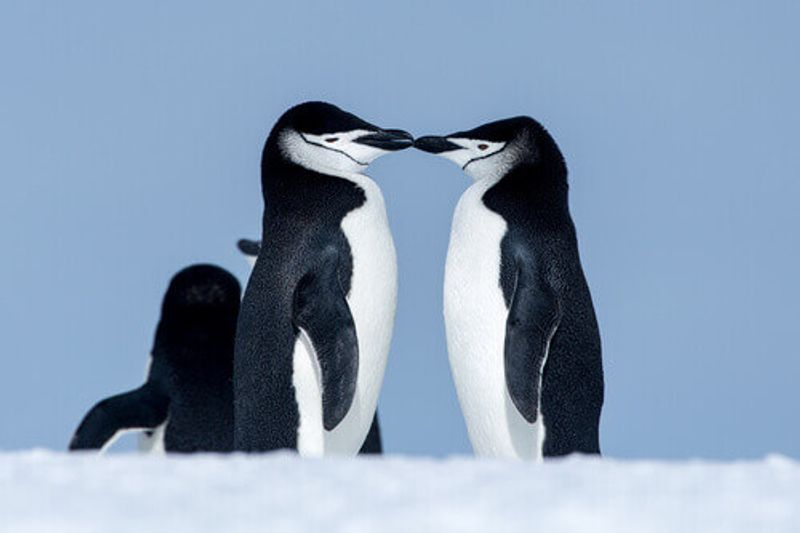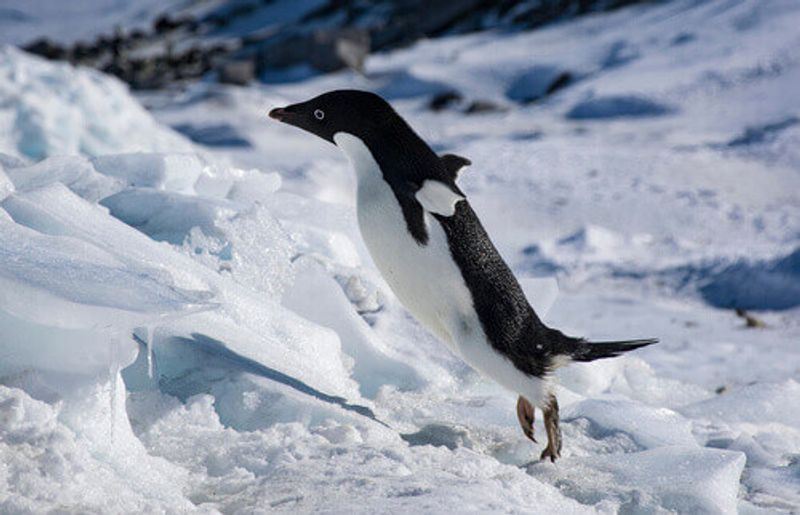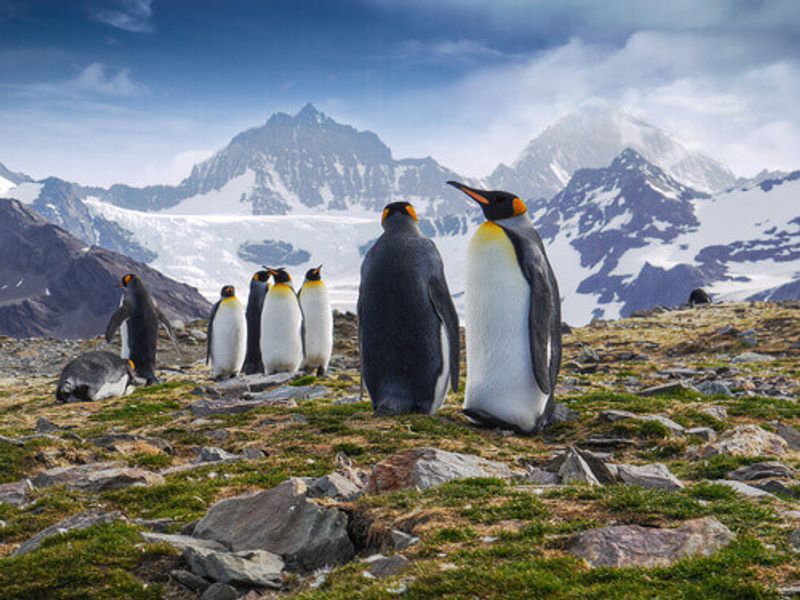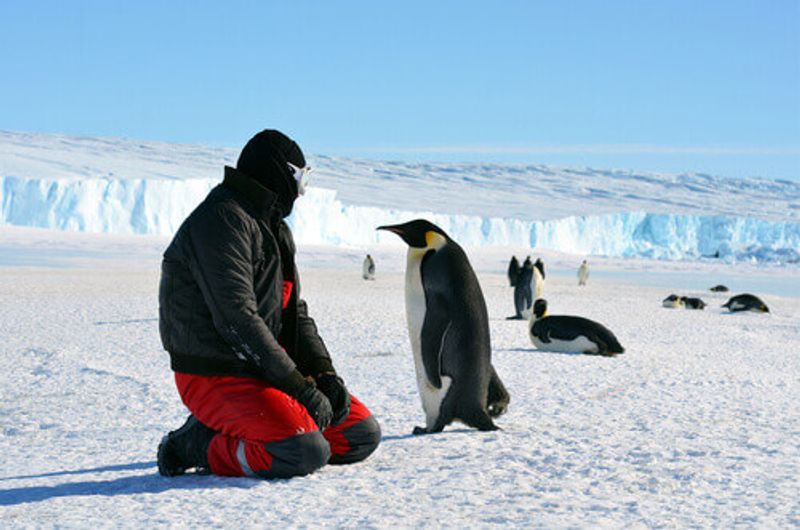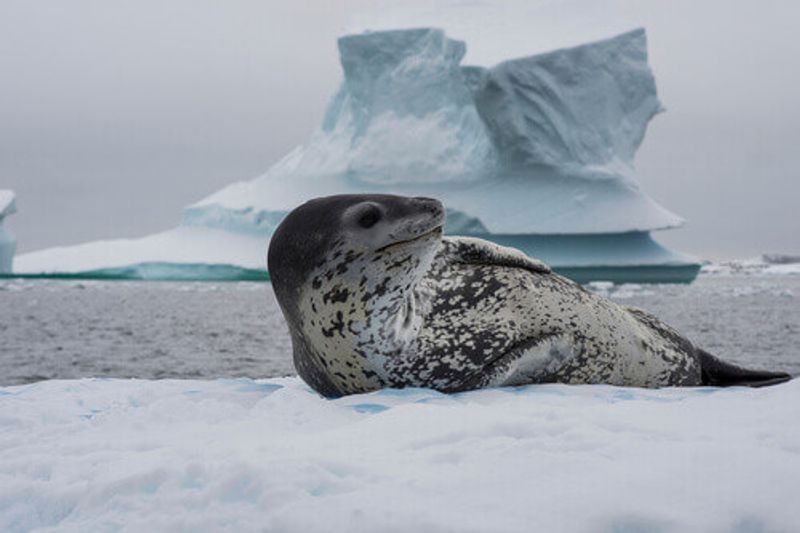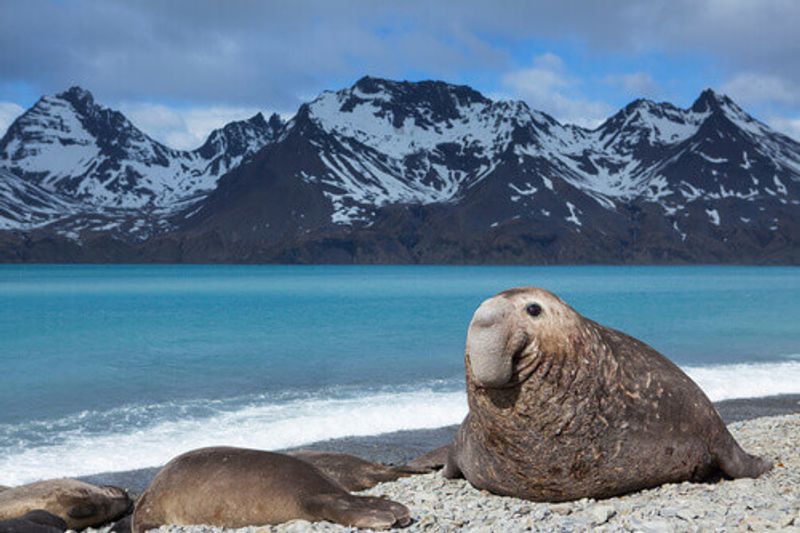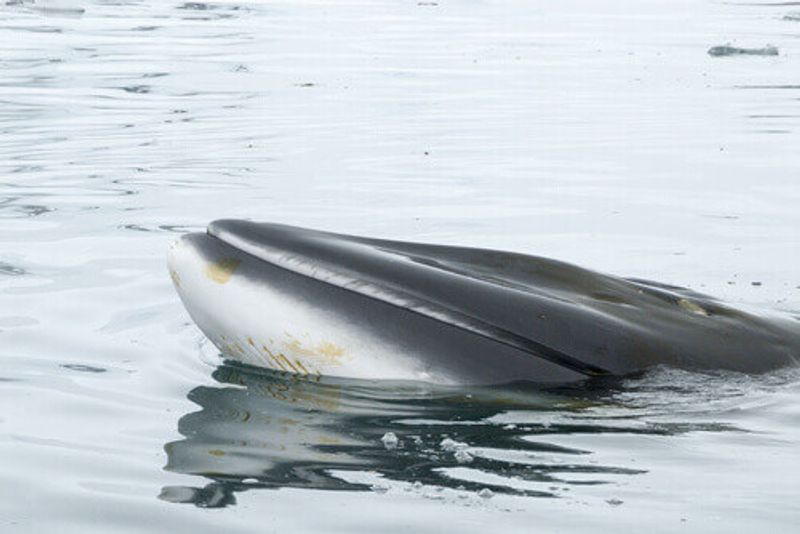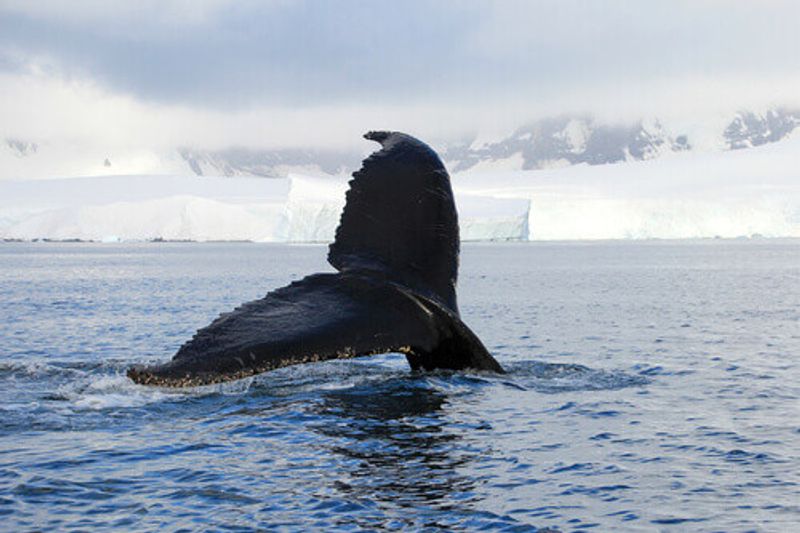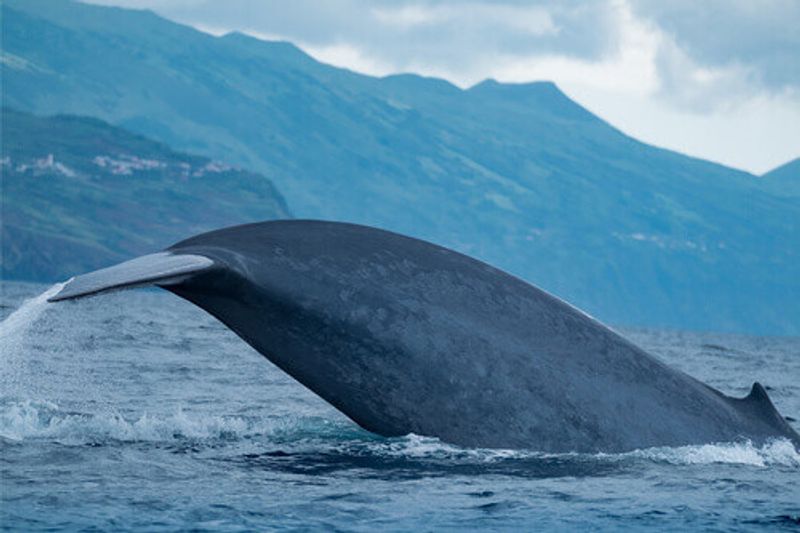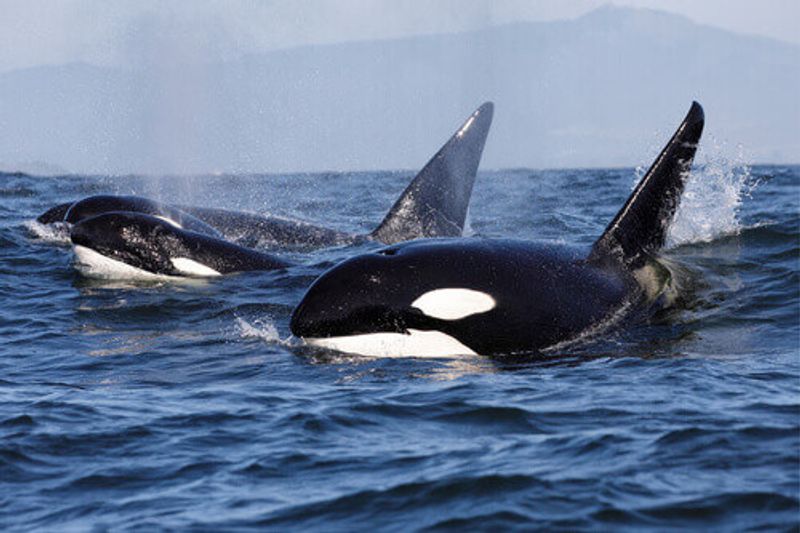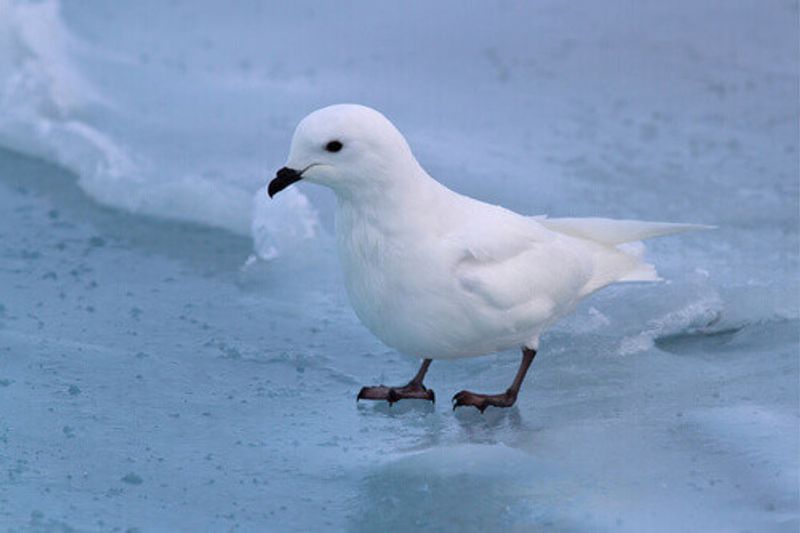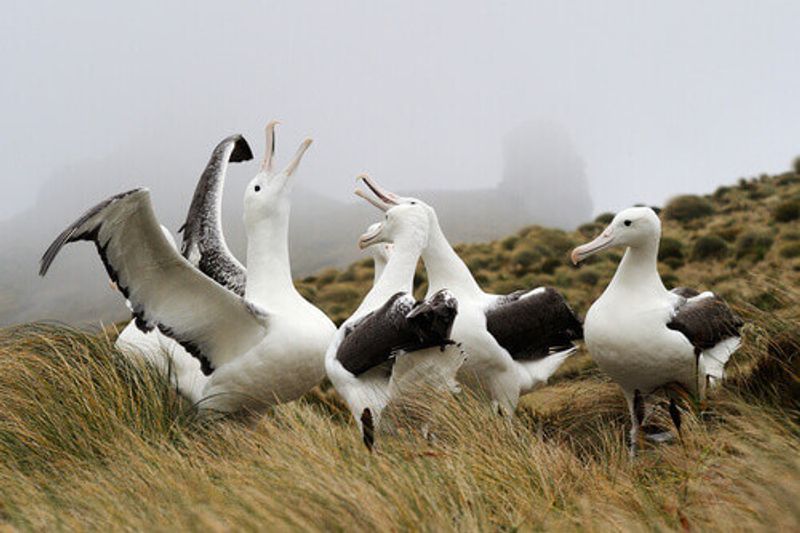It may be a frozen desert but there’s still a whole lot of wildlife in Antarctica
Here, 12 Antarctica residents you're most likely to encounter on your icy adventures.
PENGUINS
Six out of 17 species of penguin can be seen waddling, swimming, nesting or just playing on any trip to Antarctica.
Chinstrap penguins
One of the smaller penguins of the species, the Chinstrap penguins stand just 65 cm tall and weighing only 4.5 kg. They get their name from the line of black feathers under the chin that looks like a strap holding on their black ‘helmet.’ The Chinstraps are the most aggressive of the penguin family and can be quite territorial when it comes to the pebbles they collect to make nests with. Males often try to steal pebbles from each other leading to mini penguin fights. Chinstraps are normally found on rocky coastlines away from the ice on the Antarctic Peninsula.
Adélie penguins
The Adélie, weighing just 5 kg on average and standing just under a metre tall they’re mostly found on the pack ice on the Antarctic continent and the sub-Antarctic islands such as South Georgia, Macquarie Island, Prince Edward Island and Heard Island. They can live in rookeries of up to half a million and the noise – and smell – will alert you to them before you see them. They breed in the summer from November to February and the males – who share equally when it comes to parenting – create a nest of pebbles to protect the eggs from water.
King penguins
Weighing in at around 15 kgs, king penguins are the second largest of the penguin family. They have instantly recognisable orange feathers around their head and necks and live close to the sea. They have four layers of feathers to keep warm and often breed late or early, raising on average two chicks every three years. Baby king penguins can be seen on most trips to Antarctica around coastal regions.
Emperor penguins
Emperor penguins are the largest of the penguin species weighing an astonishing 30 kgs. They have golden yellow feathers around the side of their heads and mostly live on the coast of Antarctica with almost all living and breeding on sea ice. Anyone that’s watched a David Attenborough documentary will know that the emperors are the only penguin that breeds in the depths of winter shuffling their eggs between them to keep them from freezing. Whilst most penguins are monogamous, keeping the same relationship for life, emperors are serially monogamous changing their partner each season.
SEALS
Crab eaters, fur, leopard, Ross, Weddell, sea lions – there are many types of seals that can be spotted hunting underwater or soaking up some summer sun.
Leopard seal
The elegant and agile leopard seal can often be seen in waters on the shorelines around the sub-Antarctic islands or on open pack ice. They get their name from the spots on their coats but they are as fierce a predator as their feline namesake. They often wait below ice shelves ready to ambush birds, penguins or even smaller fur seals and can also be spotted darting through the water hunting fish and squid. When not looking for lunch they are often found sunbathing and napping on an iceberg. Growing up to 3.8 metres in length and weighing up to 500 kg, the leopard seal may be majestic to look at but don’t get too close.
Elephant seal
There is a reason these seals are called elephants. Males can weigh a whopping 3,700 kg – significantly more than the females of the species who rarely get heavier than 800 kg. The elephant seal might look like blubbery blobs above land but in the water, they are agile hunters and can dive as deep as 500 metres for periods as long as 20 minutes. Although usually found on the sub-Antarctic island, sometimes they are spotted in the Falkland Islands.
WHALES
Singing, splashing and dancing, anyone would think whales are here to entertain us.
Minke whale
These curious creatures grow to about 8 metres in length and are one of the most commonly found whales in Antarctica. They swim, play and feed around the pack ice and enjoy swimming alongside boats. They can be seen leaping right out of the water when playing or hunting.
Humpback whale
Thousands of humpback whales congregate around Antarctica in the austral summer and they like to show off by performing acrobatics, breaching the water and throwing themselves on to their backs. The humpbacks live and play in pods numbering up to 20 whales, and they’re recognisable by their huge, barnacle-crusted flippers.
Blue whale
The largest animal to have ever existed the blue whale can reach 30 metres in length and weigh an astonishing 200 tonnes. The size of these beasts is hard to comprehend. A blue whale heart is the size of a car and a calf can suckle 500 litres of its mothers’ milk in 24 hours gaining up to 90 kg in weight in that time. The energy is needed for the young to swim south, and the extra blubber to keep them warm in the cold waters. They are also known for their loud singing voice. While it might be soothing to listen to in a spa, up close, it is louder than a jet engine. The blue whales are sadly very rare due to whaling in the 20th century and now no more than 2,000 are known to visit Antarctica. They head to the Antarctic Ocean in the summer to feed on the nutritious krill that is in abundance in these waters before heading back to warmer equatorial waters at the end of the summer.
Orca
The orca, or killer whale as it is often known, is actually the largest of the dolphin family and can grow to the size of a bus. They certainly aren’t unique to Antarctica but this is the best place to spot them. At the top of the food chain, the orca feeds off other fish, squid and octopus but also hunt sea lions and seals. They can travel more than 2,000 km in a season, travelling in pods of up to 40 at a time. Adult orcas share the parenting responsibility, babysitting the calves of others and allowing the parents to hunt.
BIRDS
From pigeon-sized petrels to huge albatrosses, the Antarctic skies are as alive as the oceans.
Snow Petrels
These small birds are snow white in colour apart from the black eyes and beaks. Small in stature they may be but these hardy birds live up to 20 years in freezing conditions. There are an estimated four million snow petrels on the continent with many of them found near open water near the pack ice. They lay eggs in October and November meaning allowing their chicks to hatch in the warmer summer months.
Albatross
Known as the king of the skies, the albatross is the largest of any bird on earth. With an extraordinary wingspan of 3 to 3.5 metres, the albatrosses use the strong Antarctic winds to help them fly vast distances using only minimal energy. They can live for up to 50 years and have a mate for life, which although is very romantic, causes a slow breeding process. Pairs have just one egg at a time and both parents take turns looking after it. Furthermore, it is 3 to 5 years before the chick reaches sexual maturity. Numbers are also declining due to longline fishing techniques. Albatrosses are usually found on exposed ridges on Prince Edward Island and South Georgia.
